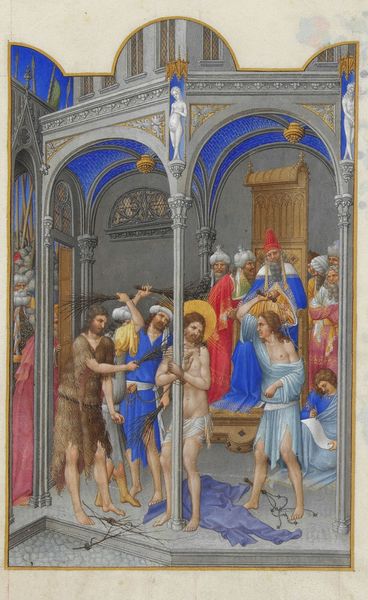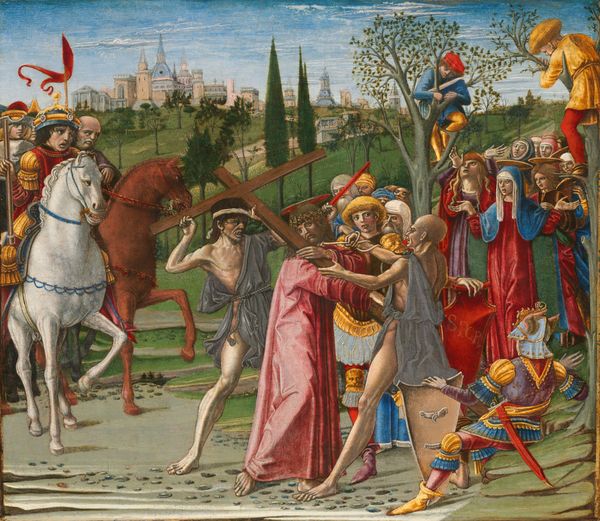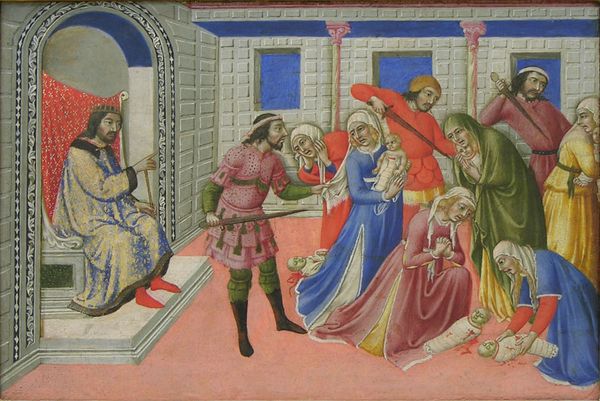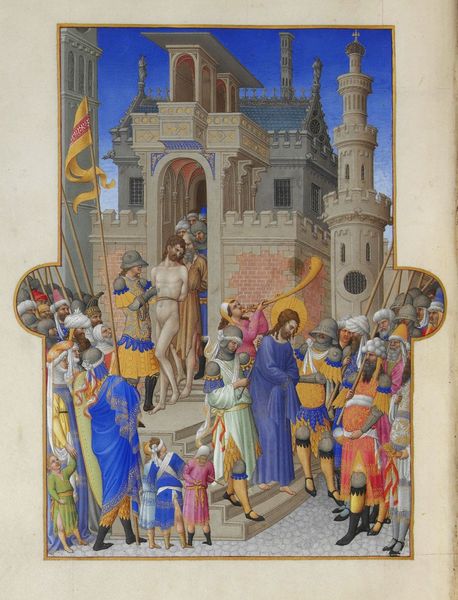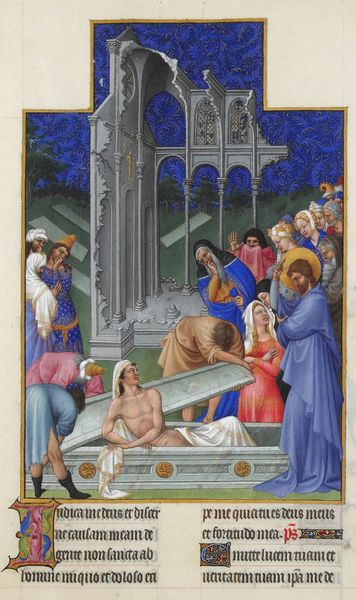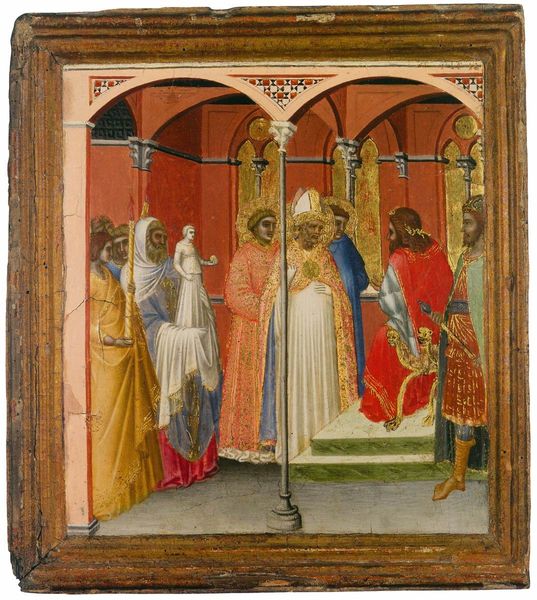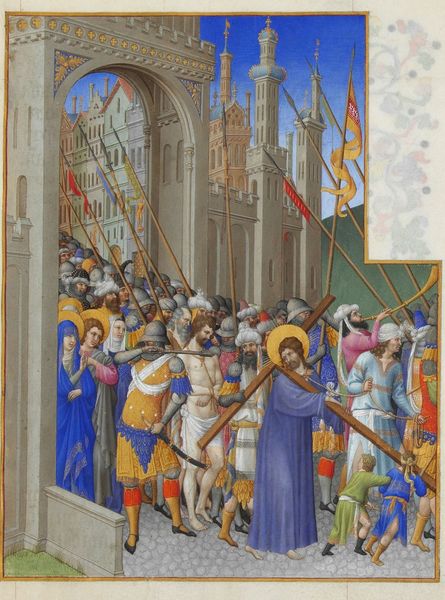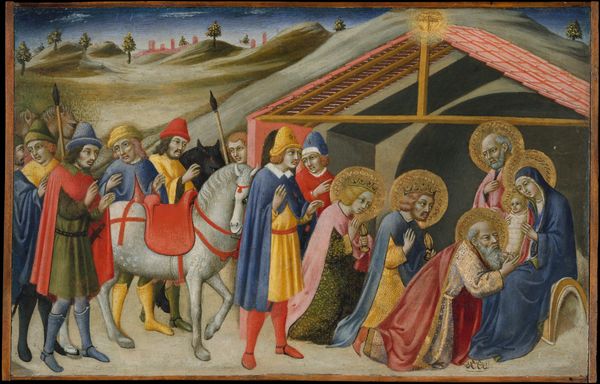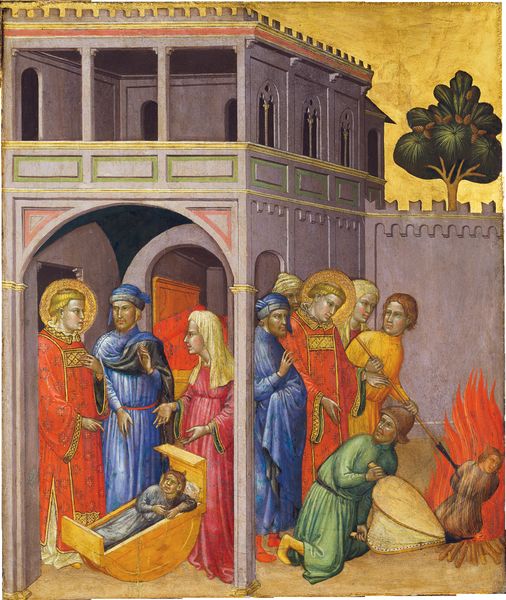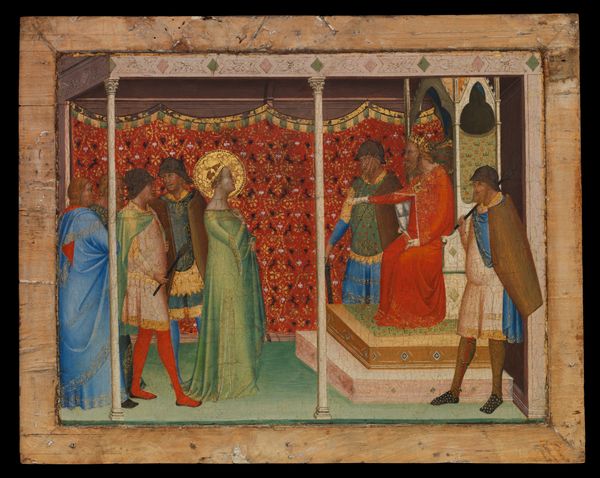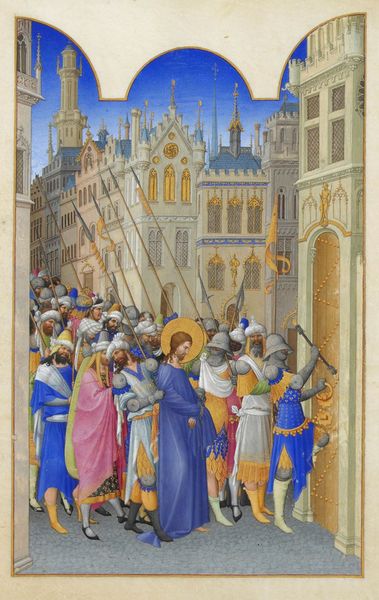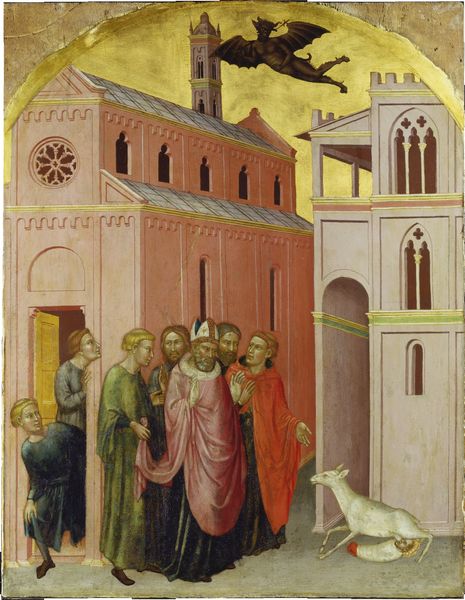
painting
#
medieval
#
narrative-art
#
painting
#
prophet
#
figuration
#
miniature
Copyright: Public domain
Curator: Look closely at this medieval painting, titled "Curing a Possessed Woman," by the Limbourg brothers. Editor: It has this deeply unsettling but mesmerizing effect. The miniature format intensifies the drama—claustrophobia rendered exquisitely. What's immediately striking is the tension between the elegance of the setting and the visceral scene of apparent suffering. Curator: Let's talk about the construction of this piece. Considering the context of illuminated manuscripts, it is all the more interesting when we explore the materiality. Pigments like lapis lazuli, combined with gold leaf, highlight wealth, status and spiritual transcendence. The process speaks to power—the elite commissioning these items possessed immense financial resources and access to specialized labor. Editor: Absolutely. Viewing the 'possessed woman' through the lens of historical trauma is crucial. The spectacle of female hysteria was a tool used to deny women bodily autonomy, a practice fueled by patriarchal structures. This artwork inadvertently feeds the very power dynamics it depicts. Who gets to define madness? Whose perspective dominates this narrative? The male figures, particularly the presumed holy figure on the left, maintain power, in part due to being the subject and owners of the illuminated manuscript. Curator: Yes, and observe the use of architectural space. The setting emphasizes the power structure—a grand, ornamented, blue building contrasting with the broken stance of the 'possessed woman'. The tile floors seem oddly pristine compared to the chaos on its steps, perhaps signifying a perceived order versus uncontrollable reality. The setting emphasizes power—control literally framed and ornamented, versus unruly, uncontained distress. Editor: That division also reads as class stratification. It's crucial to critically examine medieval tropes about marginalized peoples, and the relationship between the ruling classes and depictions of powerlessness. Who produces these images, what values are they transmitting, and how does that intersect with religious and political propaganda of its day? The very act of recording this suffering potentially normalizes similar subjugation of individuals and communities, as much now as it did then. Curator: Indeed. Examining the broader cultural forces at play offers more context for analyzing power dynamics within these objects and how artistic practices helped perpetuate them. Editor: Acknowledging this history enables viewers to interpret the images in front of them in a much richer, relevant way.
Comments
No comments
Be the first to comment and join the conversation on the ultimate creative platform.
